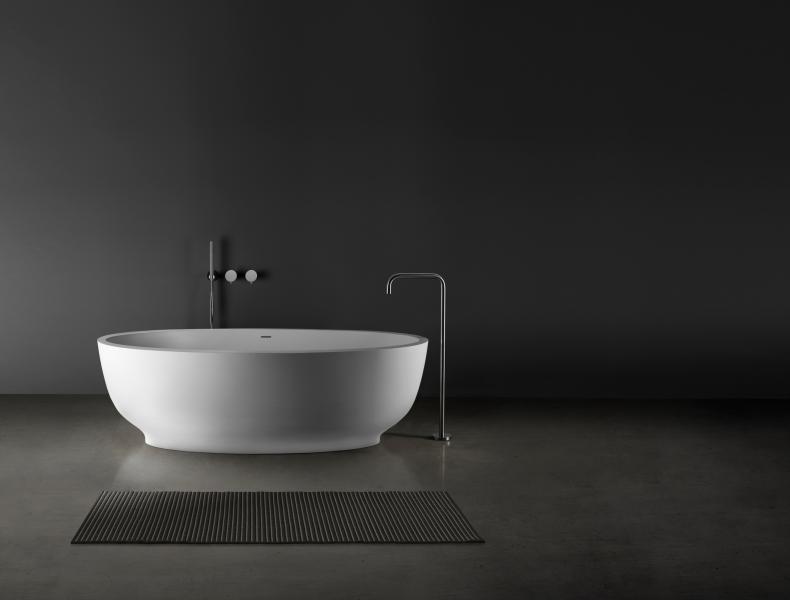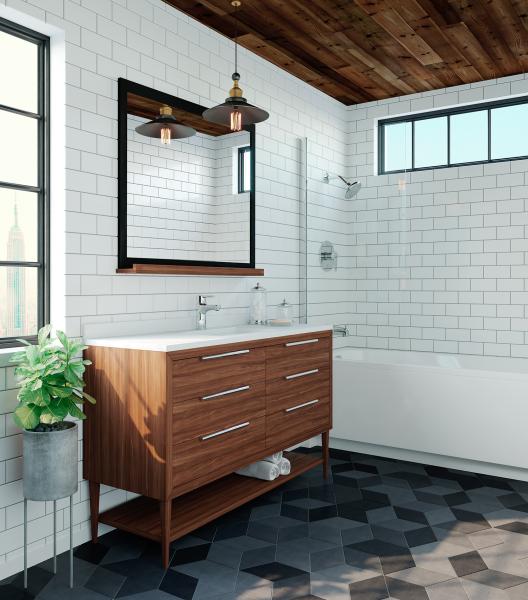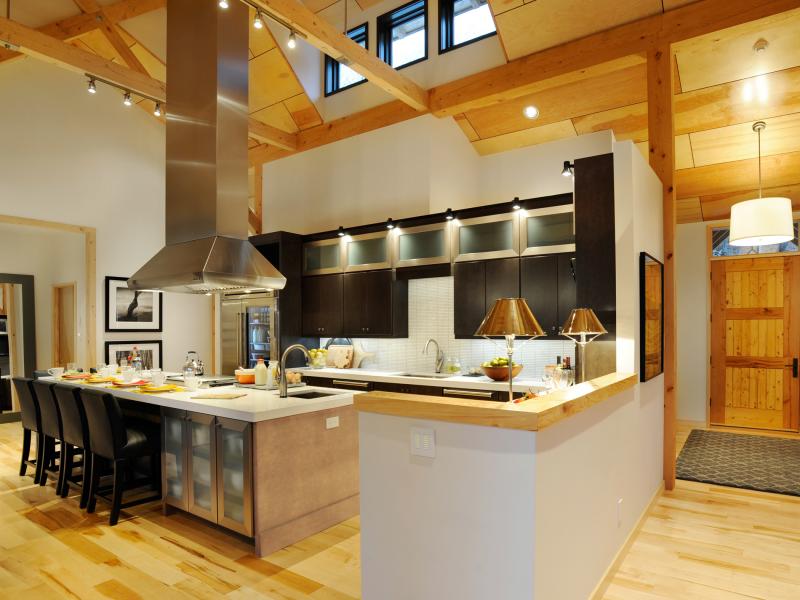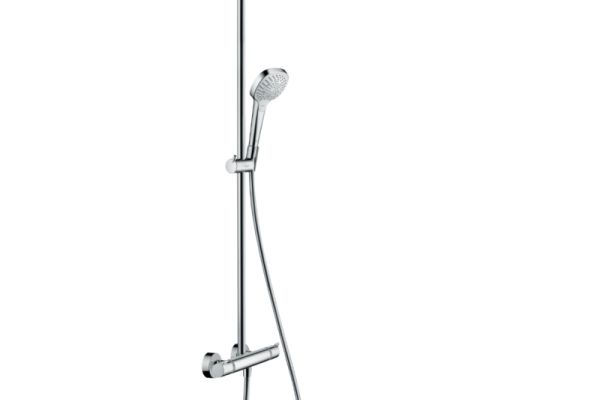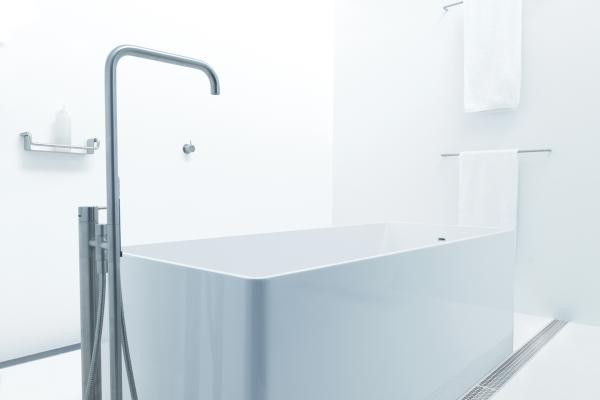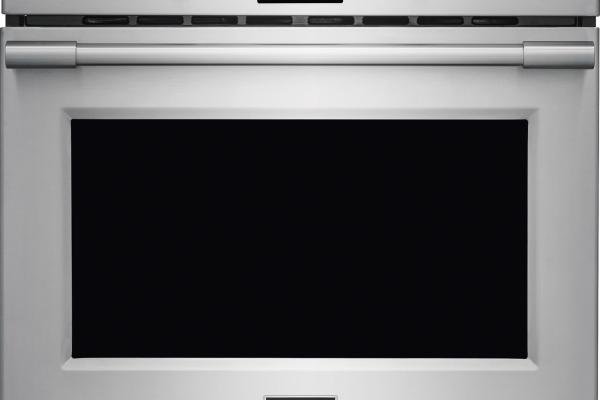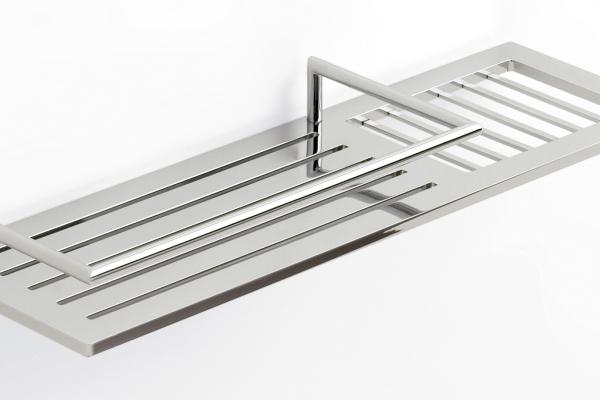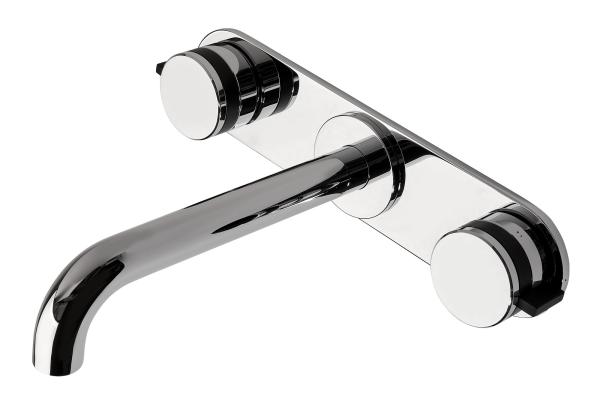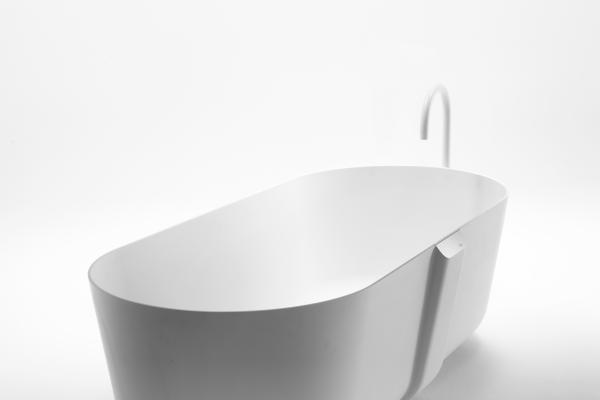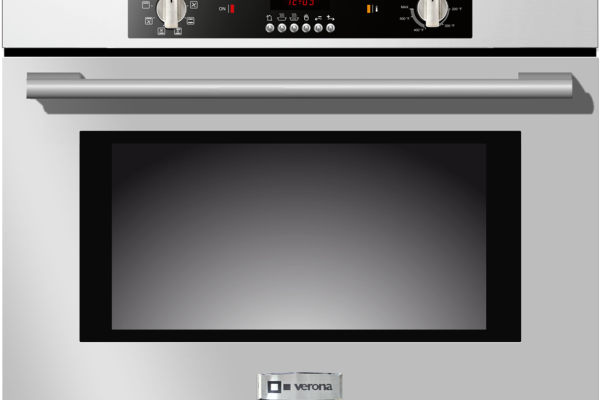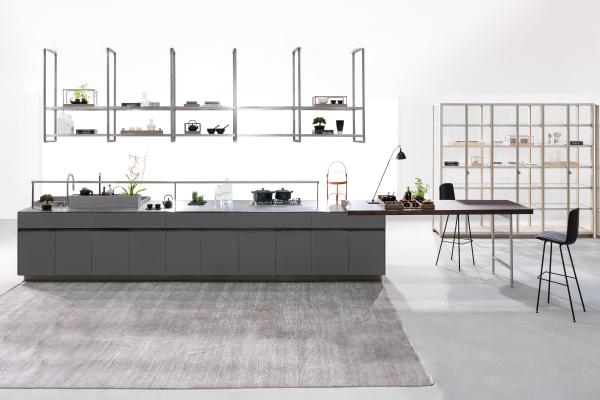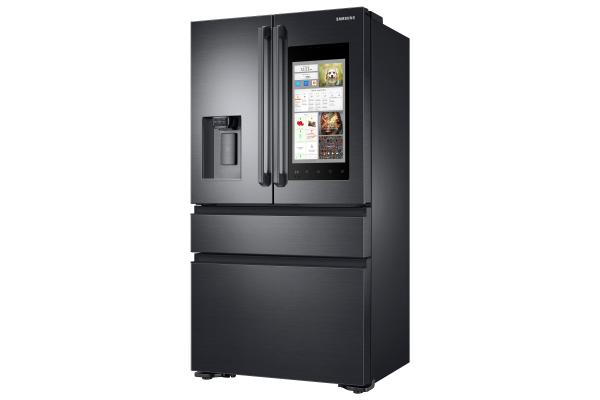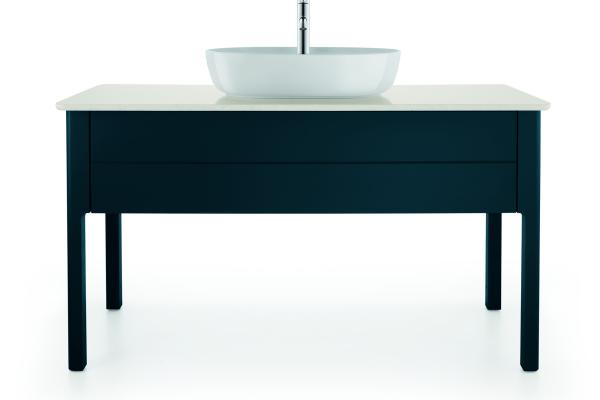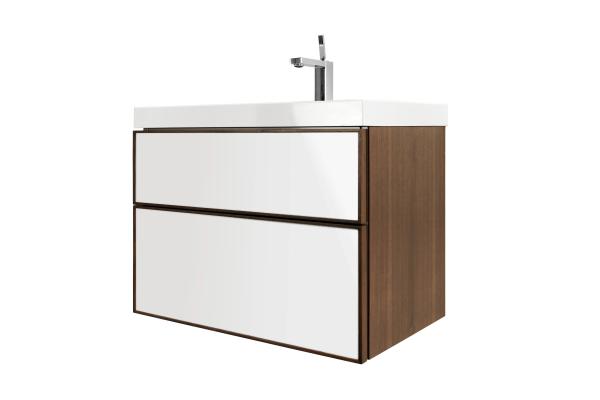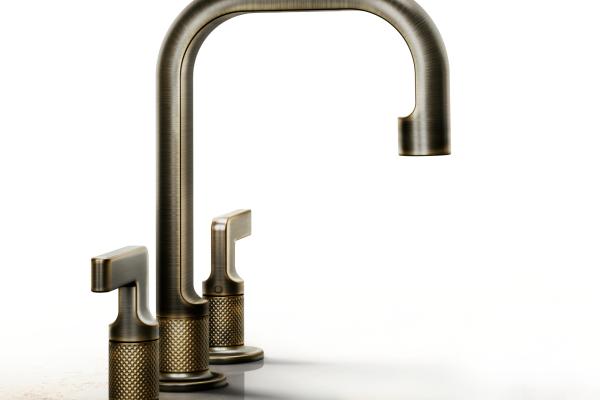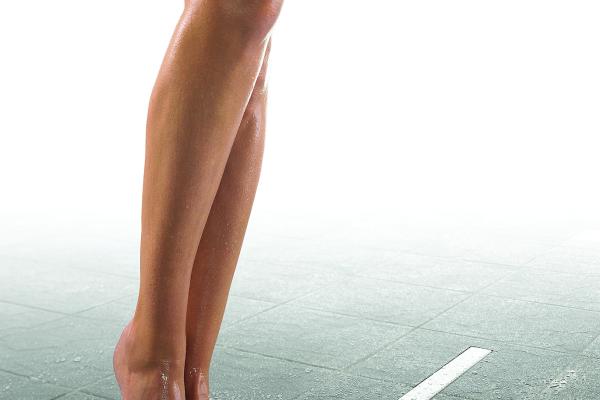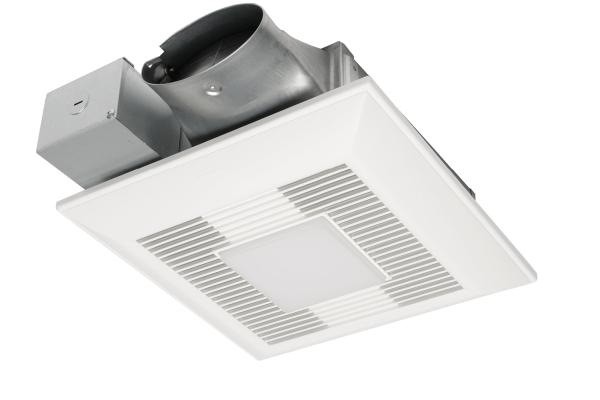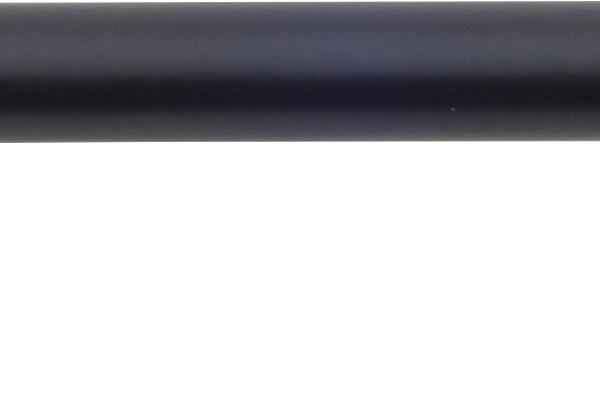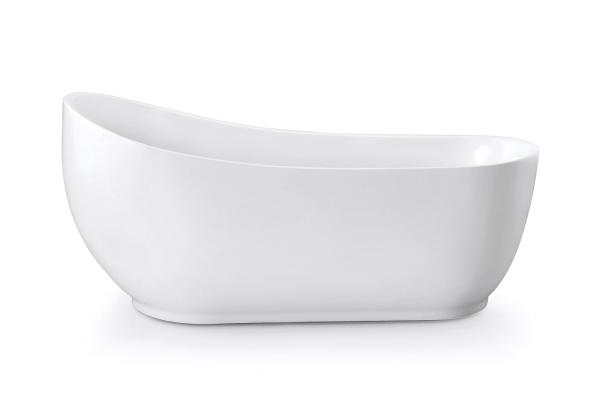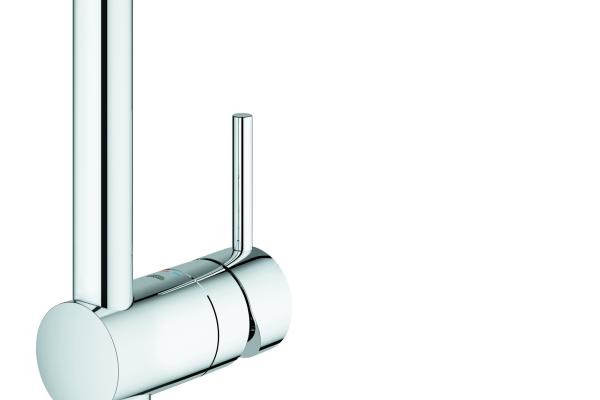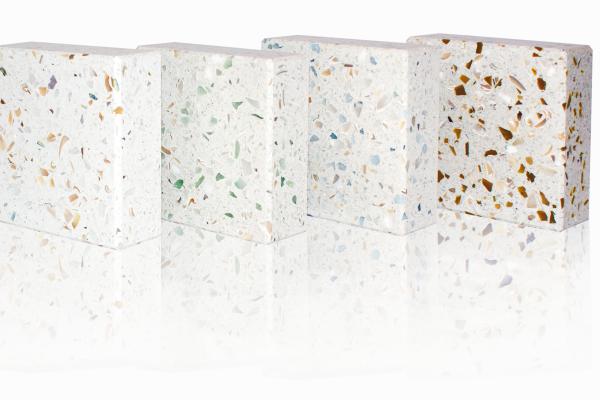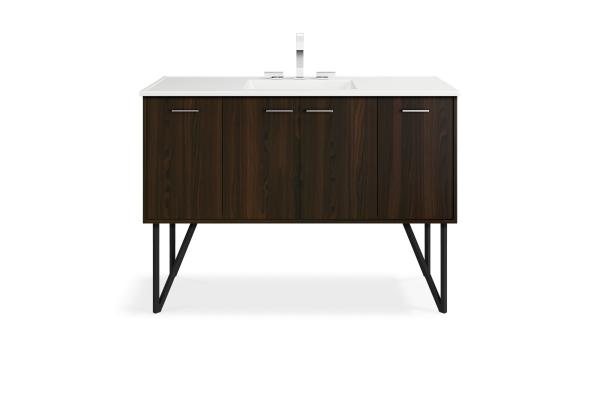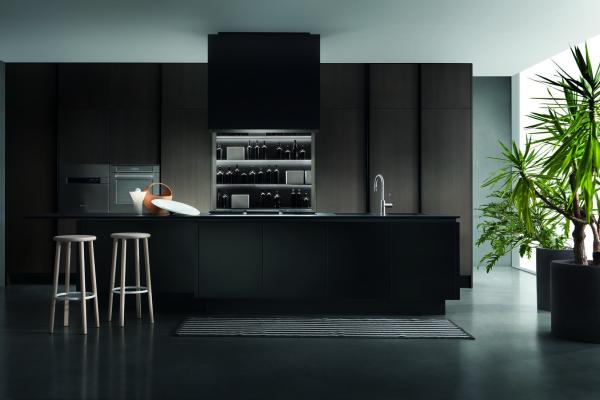Once upon a time, the kitchen and bath were utilitarian spaces. The rooms were important, but they were largely hidden and got the short end of the design stick. Times have changed. Today, the two rooms are the most important.
The kitchen is frequently an extension—or at the center—of the main living space, visible for all visitors to see. And bathrooms are much more than places to wash up. It makes sense, then, that the products and materials that go into these rooms be cutting edge, attractive, and durable. And the products and materials that construction professionals choose these days are likely to be modern or contemporary.
In its 2017 Kitchen & Bath Design Trends Report, the National Kitchen & Bath Association (NKBA) concluded that contemporary-styled kitchens have overtaken traditional to become the second most popular in North American kitchen design. The other styles that are emerging, NKBA says, are industrial, Mid-Century Modern, and mountain modern. Bath trends to keep in mind include painted cabinets in such colors as gray, blue, and black; furniture-look pieces; rollouts and pullouts; under-cabinet LED lighting; and accessible and universal design features.
“Universal design is commonplace among NKBA members, who serve clients by specifying spaces that are safe as well as beautiful,” NKBA CEO Bill Darcy said in a statement announcing the findings. “They design for users of all ages and abilities.”
Builders and remodelers should consider universal design products and features as well. According to Home Innovation Research Labs, the trend is hot among Baby Boomers and in multigenerational households. “Boomers often design with their aging parents in mind, who may join the household when they are less able to care for themselves,” Home Innovation says in a kitchen and bath trend report.
Other options construction pros should be considering are natural stone surfaces (and their quartz look-alike alternatives); undermount sinks; ceramic tile and natural stone tile flooring; and low-flow fixtures, Home Innovation says. Our cover story this month highlights many of these trends, but it also brings a wealth of stylish and innovative products to fit your projects. -N.F.M.
CONTEMPORARY LIVING
Nearly 600 members of the National Kitchen & Bath Association (NKBA) weighed in on trends, and the verdict is in: Contemporary and transitional design are on the rise in kitchens and baths.
One indicator of the growing contemporary aesthetic is a preference for minimalist cabinet door styles. “In general, I think people’s lifestyles are getting busier and, as a response, there is a search for simplicity that is refl ected in tastes around personal space,” says Suchi Reddy, principal of New York-based Reddymade Architecture and Design.
Other prevalent modern bath elements include undermount sinks; no-threshold showers; and concealing power outlets within vanities. Hiding outlets and tech features are a bit niche, but they’re gaining ground.
“Technology is a big part of the rise of contemporary and transitional aesthetics,” explains Elle H-Millard , industry relations manager for NKBA. “Homeowners are adapting to the latest technology in both kitchens and baths, and both lend to cleaner lines.” —S.K.
The Pfirst Modern bath collection is a singlehandle faucet and shower trim that offers contemporary style at an affordable price point. Available in polished chrome and brushed nickel, it’s equipped with an integral temperature limit stop, ceramic disc valve, and push-and-seal drain.
COLOR CODED
Contemporary design is surging in the bath, but which colors complement the style? According to the NKBA 2017 trend report, white, off-white, and gray dominate.
“Contemporary and transitional styles fully support the monochromatic palettes that use shades of white and gray,” says Stephanie Pierce, director of design and trends for MasterBrand Cabinets. She adds, “Black accent colors in hardware and faucets as a contrast or on either the surfaces or vanities are a nice way to create striking contrast in small spaces while maintaining the clean and airy feel often associated with both of these styles.”
The report reveals that blues are emerging, with younger designers opting for violet and purple tones. “As the spa bathroom trend continues due to people caring more about the bathroom experience in general, colors like soft blues, greens, and violets translate really well—they invoke a sense of calmness,” says Sue Wadden, director of color marketing at Sherwin-Williams.
Gold and brushed brass are gaining ground when it comes to faucets, leading Wadden to believe that “deeper, darker hues in the bathroom are going to emerge. The combination of dark walls and golden and copper metals are really moving in, and the look is beautiful for the bathroom.” —S.K.
Scava is an oak veneer kitchen cabinet set with handles incorporated into the fronts. The kitchen features columns in brushed steel, and an island in Rovere Silver oak wood. A variety of surfaces are available. Click here for bonus Blippar content.
KITCHEN MIXINGS
The materials and colors dominating the cooking space are a lot of the usual suspects. White and gray are still among the hottest colors for cabinetry, but blue, black, and high-gloss are emerging.
“We have certainly had requests for white and gray, and for high-gloss fi nishes, which is an interesting high-end traditional element re-emerging in the modern kitchen,” says Reddymade Architecture and Design Principal Suchi Reddy. The NKBA trend report says two-toned kitchens are on the rise as well.
Similar to the two-color trend, there’s more mixing and matching of materials for various kitchen surfaces and accents. In particular, rustic and reclaimed woods are becoming more desirable.
“Cabinets covered in natural materials and book-matched stone are among the spectacular designs we have realized recently,” says Reddy. “And we pair glass and stone frequently—stonecovered islands and back-painted glass cabinets are one of our favorite combinations.”
When talking stone countertops, NKBA states quartz is still tops. “Quartz offers a beautiful aesthetic and a durable surface that homeowners fi nd appealing. Lower maintenance is key for our busy lifestyles,” explains Elle H-Millard, industry relations manager for NKBA.
Compact sintered surfaces are also getting noticed. “We are seeing monolithic materials such as Neolith, which come in large formats, becoming popular among our clients,” Reddy says. —S.K.
Part of the company’s Estate and Premier lines, these cabinets are among the brand’s best offerings. Details include cope-and-tenon construction, a 1/2- or 5/8-inch plywood back, six-way adjustable soft-close hinges, and 3/4-inch solid hardwood drawers with dovetail joints.
AGING (IN PLACE) GRACEFULLY
A decade ago, the late architect Michael Graves raised awareness that designers could lead the way in improving accessibility. The movement may have started out slow, but universal design is now a hot topic.
According to the NKBA 2017 Design Trends Report, universal design is on the uptick in kitchens and baths. A quick survey of the market shows a breadth of products and solutions that address limited mobility or ADA compliance, from magnetically attached handheld showers to French-door ovens.
“The extra mindfulness won’t cost more, it will just provide a more effective design solution,” says Sacramento, Calif.-based interior designer and Certifi ed Aging in Place Specialist Kerrie Kelly. Knee space in a bathroom, she explains, can accommodate wheelchairs but also makeup application; a shower bench can become a leg-shaving shelf; and roll-out shelves in kitchen base cabinets keep everything within reach.
Kelly advises retrofitting some or all kitchen cabinets to include rollout components, varied countertop heights, and two-tier pull-down systems.
“Almost every appliance today comes with countless features for a safer cooking environment without compromising aesthetics,” she says. “Our team’s top list includes induction cooktops, ovens, and refrigerators that have side-swing doors, and dishwasher and microwave drawers.”
In the bathroom, Kelly points to barrier-free showers that result in sleeker, streamlined washrooms; lever faucets that are easy to operate for persons with arthritis; and adjustable showerheads. —S.K.
This story originally ran in the Nov/Dec 2017 issue of PRODUCTS magazine. See the print version here. Click here for more information about this issue's bonus Blippar content.

